Widespread Nacreous Clouds over the UK - OPOD
Widespread Nacreous Clouds over the UK - OPOD: A Phenomenon of Stratospheric Beauty
Nacreous clouds, also known as polar stratospheric clouds (PSCs), are a captivating atmospheric phenomenon that occasionally graces the skies above the United Kingdom. On February 2nd, 2016, the UK experienced an impressive display of these unique clouds, thanks to persistently low temperatures in the stratosphere. Unlike ordinary tropospheric clouds, nacreous clouds form at altitudes of 15 to 25 kilometers, where temperatures plummet below -85 degrees Celsius.
These ethereal clouds consist of tiny ice crystals that scatter and diffract high-altitude sunlight long after darkness has fallen on the ground. It is this diffraction that gives nacreous clouds their mesmerizing glow, which appears bright and colorful against the darkening sky. Nacreous clouds are classified as type II PSCs and are renowned for their iridescence. In some instances, they may be embedded within more intense PSCs, creating a delicate interplay of faintly illuminated cloud formations.
While nacreous clouds are typically most vivid during twilight hours, they can occasionally be visible during the daytime as well. This rarity was observed during the widespread occurrence of nacreous clouds over the UK. Even under the sun's brilliance, these clouds managed to captivate onlookers with their iridescent hues and delicate formations.
The phenomenon was not limited to a single location but was observed in various parts of the UK. Edinburgh, for instance, had the opportunity to witness the breathtaking display of nacreous clouds against its urban backdrop. The cityscape provided a striking contrast to the celestial beauty unfolding above.
Another remarkable sighting took place in Wigan, Lancashire, where a dark contrail from an aircraft intersected with the luminous nacreous clouds. This fortuitous convergence of natural and man-made elements added a surreal touch to an already awe-inspiring spectacle.
Nacreous clouds are a subject of fascination for scientists and sky enthusiasts alike. The intricate interplay of light and ice crystals in the stratosphere creates an unparalleled visual experience. These clouds not only serve as a reminder of the complexity and beauty of our atmosphere but also offer insights into atmospheric conditions and the delicate balance of temperature and moisture at high altitudes.
To fully appreciate the wonder of nacreous clouds, it is crucial to understand their formation. The exceptionally low temperatures in the stratosphere enable the formation of ice crystals, which are typically smaller and more uniform compared to those found in tropospheric clouds. These tiny ice particles, suspended high above the Earth's surface, interact with sunlight in a unique way, resulting in the diffraction of light and the mesmerizing glow associated with nacreous clouds.
In conclusion, the widespread occurrence of nacreous clouds over the UK on February 2nd, 2016, provided a rare opportunity for sky gazers to witness the ethereal beauty of these polar stratospheric clouds. From Edinburgh to Wigan, people marveled at the iridescent hues and delicate formations that adorned the sky. Nacreous clouds serve as a testament to the intricate workings of our atmosphere and remind us of the captivating wonders that await when we cast our gaze upward.
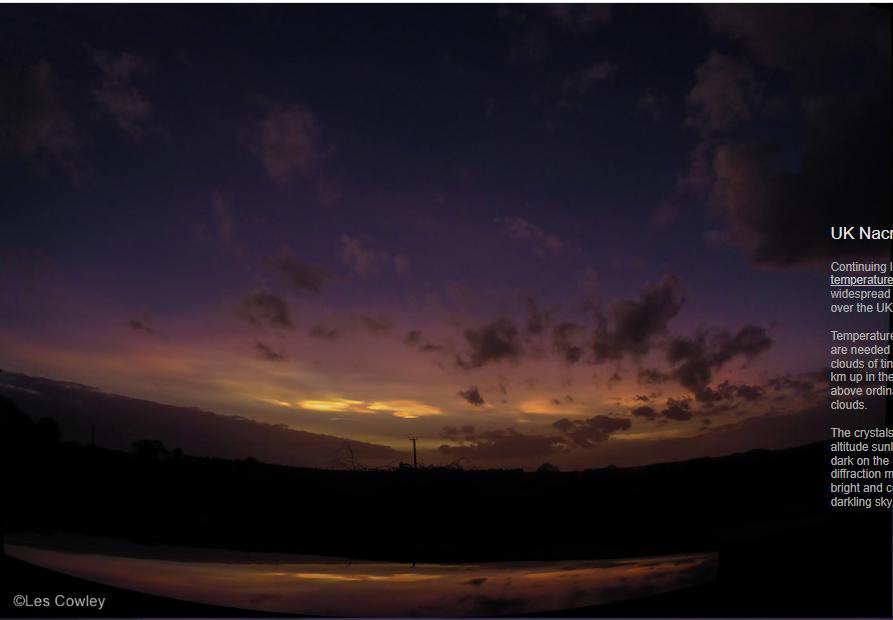
UK Nacreous Clouds
Continuing low stratosphere temperatures produced widespread nacreous clouds over the UK on 2nd February '16.
Temperatures below -85 Celsius are needed to produce these clouds of tiny ice crystals 15 - 25 km up in the stratosphere way above ordinary tropospheric clouds.
The crystals scatter, diffract, high altitude sunlight long after it is dark on the ground. The diffraction makes the clouds glow bright and colourful in the darkling sky.
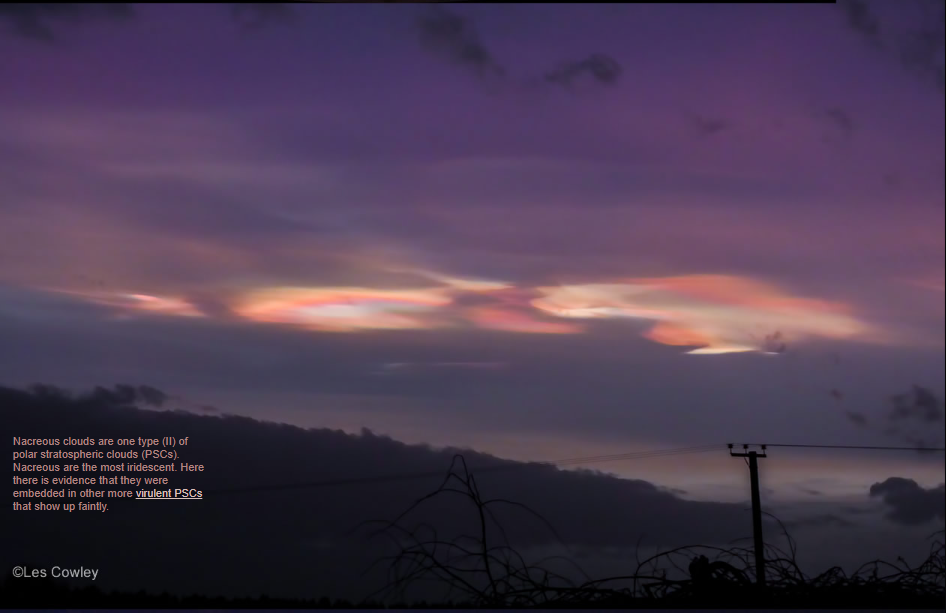
Nacreous clouds are one type (II) of polar stratospheric clouds (PSCs). Nacreous are the most iridescent. Here there is evidence that they were embedded in other more virulent PSCs that show up faintly.
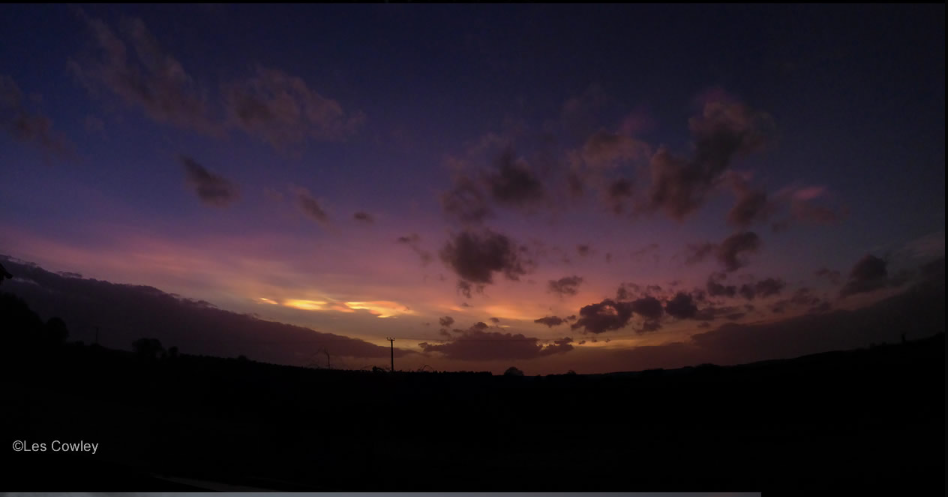
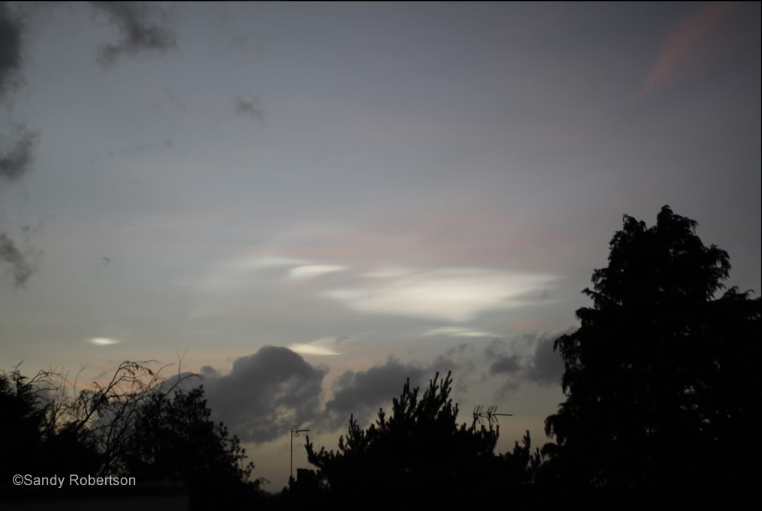
While they are brightest after sunset and before dawn, they can - as here - be visible in daytime.
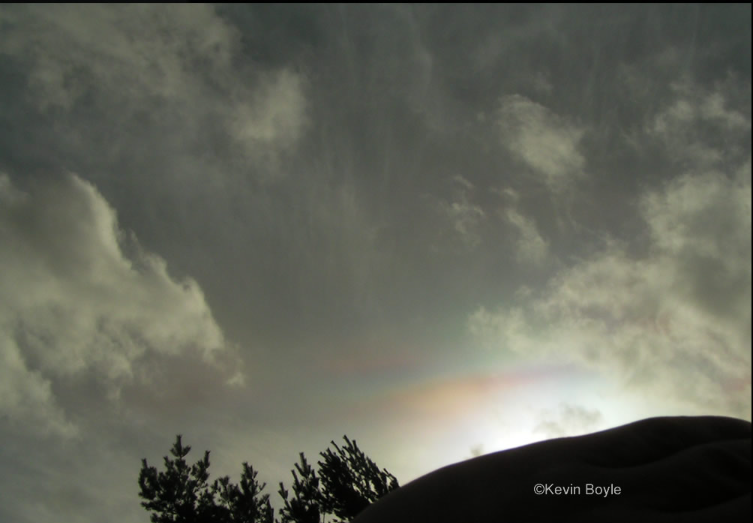
Another daytime sighting
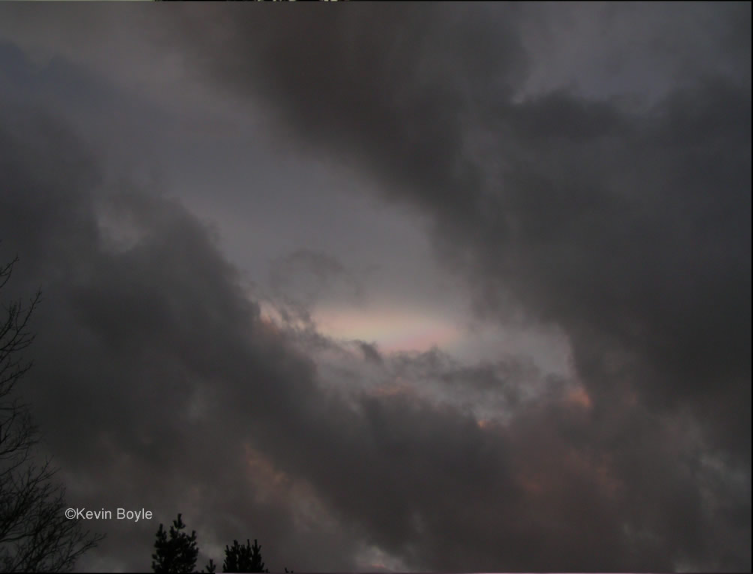
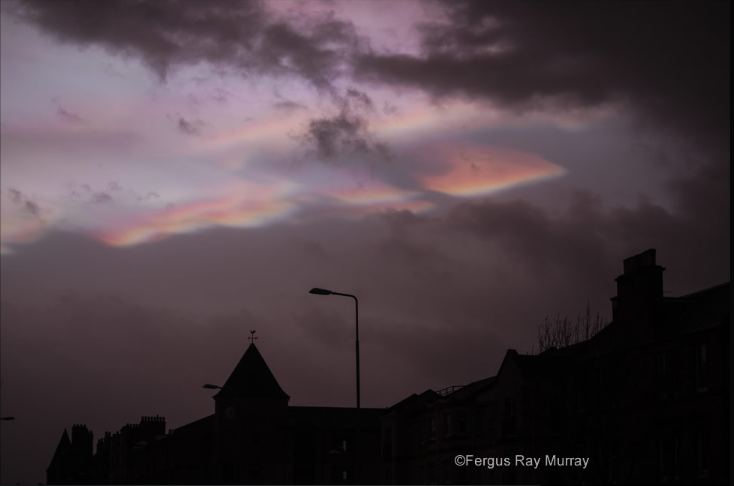
Edinburgh saw them..

Wigan, Lancashire.
The dark line is the contrail of an aircraft far below the clouds.
Note: this article has been automatically converted from the old site and may not appear as intended. You can find the original article here.
Reference Atmospheric Optics
If you use any of the definitions, information, or data presented on Atmospheric Optics, please copy the link or reference below to properly credit us as the reference source. Thank you!
-
<a href="https://atoptics.co.uk/blog/widespread-nacreous-clouds-over-the-uk-opod/">Widespread Nacreous Clouds over the UK - OPOD</a>
-
"Widespread Nacreous Clouds over the UK - OPOD". Atmospheric Optics. Accessed on November 26, 2024. https://atoptics.co.uk/blog/widespread-nacreous-clouds-over-the-uk-opod/.
-
"Widespread Nacreous Clouds over the UK - OPOD". Atmospheric Optics, https://atoptics.co.uk/blog/widespread-nacreous-clouds-over-the-uk-opod/. Accessed 26 November, 2024
-
Widespread Nacreous Clouds over the UK - OPOD. Atmospheric Optics. Retrieved from https://atoptics.co.uk/blog/widespread-nacreous-clouds-over-the-uk-opod/.